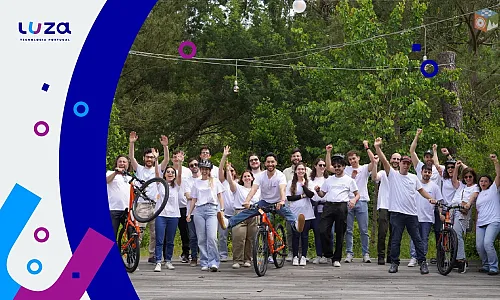Accelerating Productivity with Microsoft Copilot: The Critical Role of an Adoption Program in Internal Rollouts
As organizations increasingly integrate artificial intelligence (AI) tools to streamline workflows, Microsoft Copilot stands out as a powerful tool for transforming productivity across departments. By enabling natural language interactions with Microsoft 365 applications like Word, Excel, PowerPoint, and Outlook, Copilot empowers employees to achieve more with less effort. However, the successful deployment of Copilot goes beyond simply making it available. For organizations to harness its full potential, a structured and comprehensive adoption program is essential.
What Is Microsoft Copilot?
Microsoft Copilot is an AI-powered tool embedded in Microsoft 365 applications, designed to assist employees by generating drafts, summarizing content, analysing data, and more, using conversational prompts. Built on advanced AI, Copilot leverages context and user input to generate relevant responses, helping users complete tasks that would otherwise require extensive time and effort.
With such capabilities, Copilot represents an evolution in how organizations approach productivity, enabling users to focus on strategic work while automating routine tasks. However, this transformative shift in workplace technology requires a thoughtful and structured approach to onboarding and adoption.
The Necessity of an Adoption Program for Microsoft Copilot
While Copilot’s interface may appear user-friendly, the underlying potential requires an understanding of best practices, responsible use, and integration within existing workflows. An adoption program guides employees through this learning curve, ensuring they leverage the technology safely, effectively, and in alignment with organizational objectives.
1. Driving Engagement and Efficiency from Day One
When employees understand how to use Copilot, they’re more likely to engage with it confidently and consistently. An adoption program provides the foundational knowledge necessary for staff to understand Copilot's core functions and capabilities. Employees who undergo structured onboarding for Copilot are more likely to achieve early successes, which builds trust and increases engagement.
2. Enhancing Productivity and Time Savings
Without guidance, employees may underutilize or misinterpret the tool’s capabilities, missing opportunities for efficiency. An adoption program provides hands-on training, tailored scenarios, and usage best practices, showing employees specific ways to streamline their workflows with Copilot. By embedding this knowledge into the workforce, an organization can accelerate productivity gains across teams.
3. Ensuring Responsible AI Use and Data Compliance
As with any AI technology, data privacy and ethical usage are paramount. Employees need to understand what information Copilot can access, how to protect sensitive data, and how to manage AI-generated content responsibly. An adoption program will address data security and compliance policies, ensuring employees are aware of both the potential and the boundaries of Copilot’s capabilities within the organization’s regulatory framework.
4. Supporting Continuous Learning and Development
AI technologies like Copilot evolve over time, as do the needs of employees. An effective adoption program includes ongoing training and resources, empowering employees to refine their use of the tool as they become more familiar with it and as updates are released. By establishing a framework for continuous learning, organizations ensure that employees remain engaged and capable as Copilot’s features expand.
Components of an Effective Copilot Adoption Program
For organizations aiming to maximize the impact of Microsoft Copilot, a well-rounded adoption program should cover the following components:
1. Leadership and Change Management
Implementing a new technology involves more than technical installation; it requires a shift in mindset. Leaders must communicate the value of Copilot and set expectations around its use. A successful adoption program will involve senior management and change champions to advocate for the tool, motivate staff, and foster an environment open to AI-driven innovation.
2. Targeted Training and Onboarding
Employees require more than just an overview of Copilot's features. They need scenario-based, role-specific training that shows them how to use the tool in ways that benefit their daily responsibilities. By aligning training modules with department-specific workflows and tasks, organizations can help each team make the most of Copilot from day one.
3. Support Systems and Knowledge Sharing
Establishing a support system allows employees to seek help and share best practices. This might involve creating Copilot user groups, developing knowledge-sharing forums, or appointing Copilot champions who act as go-to resources within departments. A support network encourages collaboration, creativity, and troubleshooting, ensuring employees feel supported as they learn.
4. Feedback Mechanisms and Program Iteration
Ongoing feedback is essential for improving both the adoption program and the employees’ experience with Copilot. Organizations should regularly survey users to understand their experiences, successes, and challenges with Copilot, using this information to adjust training and provide relevant resources. Additionally, as Microsoft releases updates, a feedback loop ensures that employees stay informed about new features and improvements.
5. Compliance and Security Protocols
With AI in the workplace, it's crucial to educate employees on safe usage practices. An adoption program should emphasize data privacy, security measures, and ethical use cases for AI, equipping employees to handle Copilot responsibly and ensuring the organization's data protection policies are upheld.
Conclusion: Ensuring Success with Microsoft Copilot
Microsoft Copilot has the potential to revolutionize workplace productivity, enabling employees to focus on impactful work by automating routine tasks. However, the true value of Copilot can only be unlocked with a strategic adoption program that provides employees with the tools, knowledge, and support they need to use it effectively and responsibly.
By investing in a structured adoption program, organizations can foster greater employee engagement, accelerate productivity, and promote responsible AI use across departments. As the world of work becomes more AI-driven, companies that prioritize adoption will be well-positioned to harness the transformative power of Copilot to its fullest.
by Cláudia Costa, Senior Consultant at Luza








